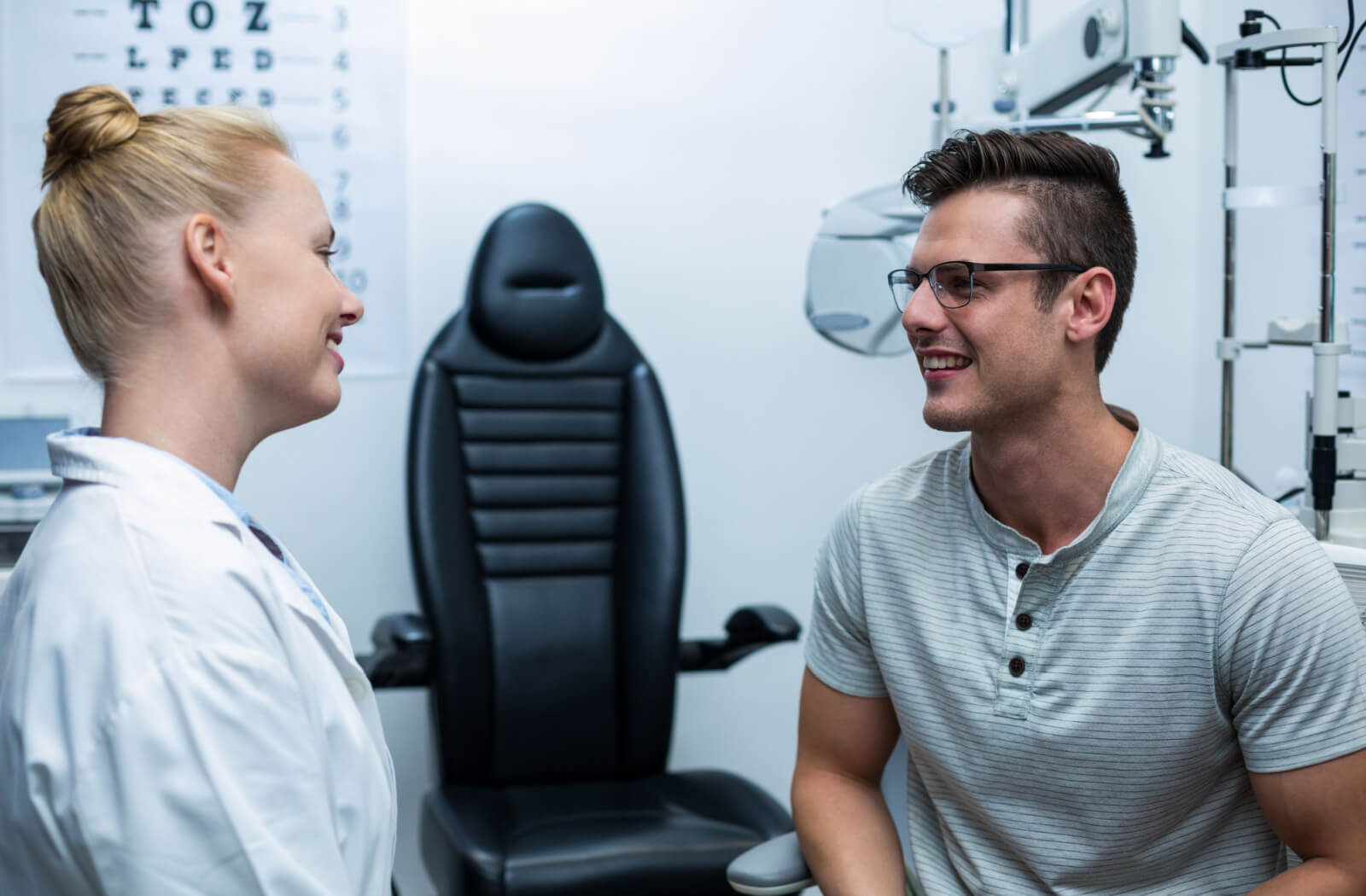Virtual reality (VR) technology has been around for quite some time, but it has only recently become more accessible and popular among consumers. Kids and adults alike are playing video games and watching immersive videos. With that being said, there are still some concerns and questions around the safety of virtual reality for families, with one of the most common being: Is virtual reality bad for your eyes?
Virtual reality (VR) headsets don’t cause direct damage to your eyes, though they can cause eye fatigue and other symptoms if not used in moderation, and young children may be more susceptible. There is some concern that VR can increase children’s risk of developing myopia, but that risk is shared with other digital screens.
What is Virtual Reality (VR)?
Virtual reality (VR) is a relatively-new technology that creates an immersive, computer-generated environment that people can interact with in a way that feels real. Using a VR headset and motion tracking controllers (or sometimes just their hands), users are visually transported into a digital space where they can look around, move, and sometimes even interact with objects or characters. This makes it popular for gaming, entertainment, training, and even healthcare applications.
Modern VR headsets like the Meta Quest 3, PlayStation VR 2, and Valve Index use motion tracking and high-resolution displays to simulate 3D environments. Whether you’re exploring a virtual museum or playing an intense game, VR offers a sense of presence that regular screens can’t match.
While VR is known for fun and innovation, many people wonder how this technology affects our health—especially our eyes. That’s what we’ll explore in the sections below.
How Does VR Work?
Virtual reality (VR) uses a headset with built-in high-refresh-rate screens to create a 3D, immersive environment. Each eye sees a slightly different image, which helps your brain perceive depth—making the experience feel real.
The headset tracks your head movements and, in many cases, your hand movements too. As you move, the virtual environment responds in real time, creating a sense of presence and interactiveness. Some systems also use sound and handheld controllers to enhance the experience, allowing the user to play games and interact with the virtual environment.
Is Virtual Reality (VR) Safe For Your Eyes?
There’s no evidence that virtual reality (VR) causes permanent damage to your eyes, but it can lead to temporary discomfort if used for long periods. Common symptoms include eye strain, dryness, headaches, and blurred vision. These symptoms are similar to what you might experience after staring at a phone or computer screen for too long.
Because VR headsets sit so close to the eyes and block out your surroundings, they can make these symptoms more noticeable. That’s why it’s important to take regular breaks. Experts often recommend taking a break and resting your eyes every 20 minutes or so.
VR is generally safe in moderation, especially when used in a suitable environment with proper breaks and good fit. If you or your child experience ongoing discomfort, it’s a good idea to check in with your optometrist.
Why Do People Think VR is Harmful?
The idea that Virtual Reality (VR) is bad for your eyes stems from the fact that the technology involves placing a screen very close to your eyes for an extended period. You’ve likely heard it before, “Don’t stand too close to the TV.” But that doesn’t mean that the proximity to the screen is harmful. It’s no different than staring at a computer or phone screen; it’s just that VR goggles cover the rest of the world and make us feel like we’re in another world.
There’s currently no evidence using VR will damage your eyes or vision. However, that’s not to say it can’t affect your eyes in the short term, especially after extended use.
VR & Digital Eye Strain
Digital eye strain, also known as computer vision syndrome, is a condition that occurs when you spend prolonged periods staring at digital screens. This includes computers, tablets, smartphones, televisions, and, of course, VR headsets.
Digital eye strain can cause a range of symptoms, including:
- Eye fatigue
- Headaches
- Blurred vision
- Dry eyes
- Neck and shoulder pain
- Watery eyes
- Eye irritation
- Red eyes
- Double vision
Many of these symptoms occur because we simply blink less while viewing a screen. Usually, we blink 15-20 times a minute, but staring at a digital screen can reduce this rate by 66%!
Experts recommend avoiding digital eye strain by placing your screen greater than an arm’s length away. Clearly, VR headsets are much closer than this, making regular breaks even more important. Remember to take off the headset every 20 minutes to rest your eyes.
Cybersickness
Because VR replicates motion, some people may experience “cybersickness,” a form of motion sickness. Motion sickness occurs when your senses send conflicting information to your brain. Cybersickness is specifically caused by your eyes perceiving movement while your body knows it’s sitting still, and it could even happen simply by scrolling through a webpage.
The symptoms of motion sickness, cybersickness, and VR sickness are remarkably similar, with only the cause setting them apart. Common symptoms include:
- Nausea
- Dizziness
- Eye strain
- Headaches
This disorientation is usually temporary. The most important step to relief is orienting yourself in your space. Taking a screen break to focus on a steady object can help, and some people find success by nibbling on a saltine cracker or drinking water.
VR for Kids: What Parents Need to Know
A growing concern with children’s eyesight is the increasing prevalence of myopia or nearsightedness. This common condition can make it difficult to see distant objects, and some research estimates as much as 50% of the population could have myopia by 2050.
Myopia appears to have an environmental component, and there’s reasonable concern that spending too long viewing things up close, such as with VR, could increase children’s risk of developing myopia. However, this isn’t limited to VR; even reading or tablets can similarly increase the risk.
Parents should supervise their child’s use of VR and look out for any signs of discomfort or eye strain. Young children’s eyes are still developing, and extended exposure may alter their development. Also, encourage children to spend just as much time outside, at least 1 hour a day.
VR Headsets for Vision Care
In some cases, VR isn’t only not bad for your eyes; it can actually be good! Some optometrists have been using VR with vision therapy to treat conditions such as amblyopia, strabismus, and convergence insufficiency. These are types of binocular vision disorders that affect how your eyes work together.
Having your eyes unable to team up can be frustrating, and many first present symptoms in children. Using VR to correct binocular vision issues can be a fun but effective way for kids to engage with their treatments.
Experts have developed other systems that could improve:
- Hand-eye coordination
- Depth perception
- Reaction time
- Eye coordination
It’s an exciting time for vision care, and we’re thrilled to see where things go.

Tips for Using VR Safely
To keep your eyes comfortable and healthy while enjoying virtual reality (VR), try these simple tips:
- Take regular breaks: Remove your headset every 20 minutes to rest your eyes and refocus on distant objects.
- Adjust the fit: Make sure your VR headset is positioned comfortably on your head and not too tight.
- Blink often: Remember to blink regularly to prevent dry eyes.
- Watch for discomfort: If you feel signs of eye strain, headaches, or dizziness, stop using VR and take a longer break.
- Limit screen time for kids: Supervise children and follow the headset manufacturer’s age recommendations for VR use.
- Keep lenses clean: Wipe the headset lenses regularly to maintain clear vision.
Everything in Moderation
While using VR goggles doesn’t cause direct damage, it’s still wise to take certain precautions, such as taking regular breaks. As a rule of thumb, remember that too much of anything is harmful. Find a balance between VR’s fun and exciting world and maintaining good eye health.
Regular eye exams can help us monitor your child’s vision and uncover if there’s anything to be concerned about. Book your eye exam with Discover Eyecare, and let’s keep the fun going in the real and virtual world!



